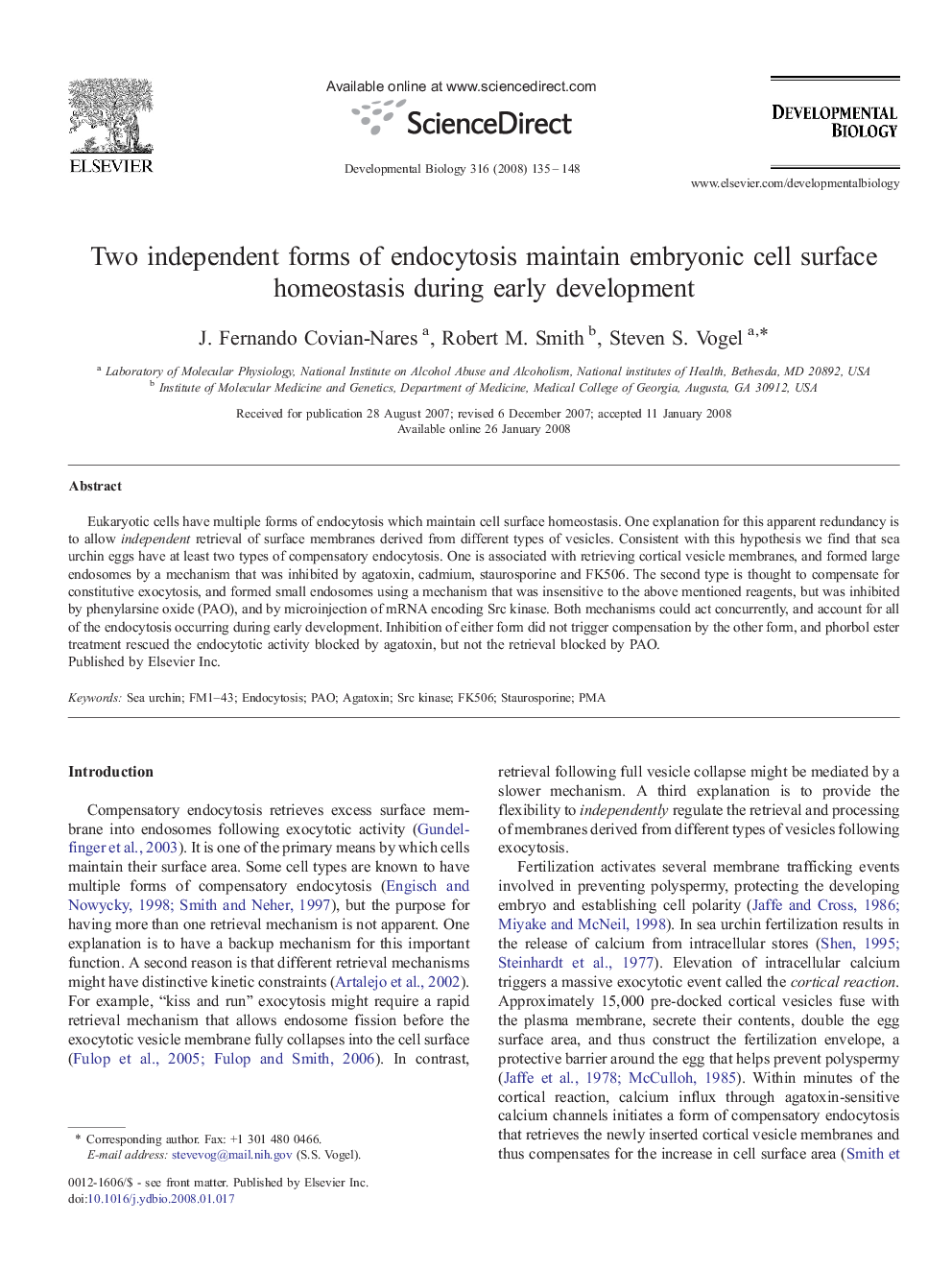| Article ID | Journal | Published Year | Pages | File Type |
|---|---|---|---|---|
| 10933615 | Developmental Biology | 2008 | 14 Pages |
Abstract
Eukaryotic cells have multiple forms of endocytosis which maintain cell surface homeostasis. One explanation for this apparent redundancy is to allow independent retrieval of surface membranes derived from different types of vesicles. Consistent with this hypothesis we find that sea urchin eggs have at least two types of compensatory endocytosis. One is associated with retrieving cortical vesicle membranes, and formed large endosomes by a mechanism that was inhibited by agatoxin, cadmium, staurosporine and FK506. The second type is thought to compensate for constitutive exocytosis, and formed small endosomes using a mechanism that was insensitive to the above mentioned reagents, but was inhibited by phenylarsine oxide (PAO), and by microinjection of mRNA encoding Src kinase. Both mechanisms could act concurrently, and account for all of the endocytosis occurring during early development. Inhibition of either form did not trigger compensation by the other form, and phorbol ester treatment rescued the endocytotic activity blocked by agatoxin, but not the retrieval blocked by PAO.
Related Topics
Life Sciences
Biochemistry, Genetics and Molecular Biology
Cell Biology
Authors
J. Fernando Covian-Nares, Robert M. Smith, Steven S. Vogel,
